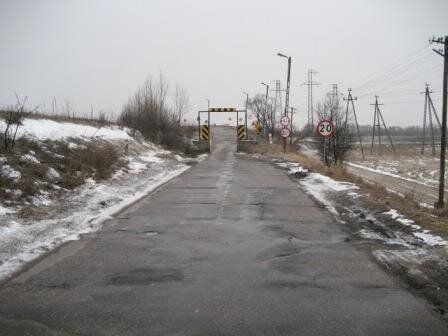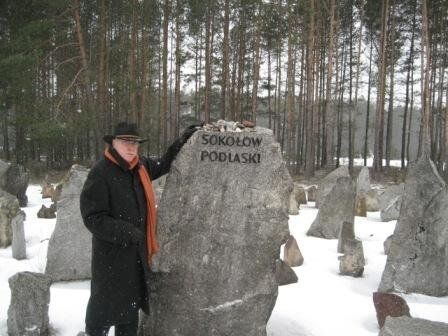
As summer's gentle breeze slowly gives way to autumn's brilliant colours and cooler temperatures, the thoughts of Jews around the world inevitably turns towards renewal, memory and atonement. It's the time our New Year rolls around followed by the holiest day in the Jewish calendar, Yom Kippur, the Day of Atonement.
For me, my thoughts are laced with tears, confusion and questions about humankind. It is the time I think of my father's family -- all but him murdered in the gas chambers of the Treblinka Death Camp. It is a time I recall my journey to that place.
It was a place I was afraid to visit. It was a place whose desolate and dreary forest held memories singed with horror. Even the trees, I am told, cry at Treblinka. The death camp established by the Nazis during the Second World War in occupied Poland was the site of the murder of nearly 800,000 Jews; amongst them, my half-brothers Sholom, age 13, and Yitzhak, age eight.
Both boys lived with my father and his first wife in the small Polish village of Bocki along with its other 750 Jewish inhabitants. After the outbreak of the World War Two, the Nazis gathered the Jews of Bocki in a small ghetto, then moved them to the larger Sokolow Podlaski Ghetto in order to better liquidate the entire region.

Family members of the author: Left-right, Aunt Malka, half brother Yitzchak, grandfather Mordechai, unidentified woman with child, half brother Sholom, father Max, wife Zisela.
On Nov. 11, 1942, the Nazi SS began the full liquidation of the region. My father, as fate would have it, slipped out under the ghetto fence that evening with two other men to steal food for their families. He returned to the wailing of sirens and the barking of dogs. He was ensnared in the roundup and placed with other men in a separate cattle car heading to Treblinka. Not knowing the fate of his family, he jumped from the moving train and stole back into the now empty ghetto to find his family gone; on their way to death, on their way to Treblinka.
On a cold wintry day in February 2007, I found myself in a car on a narrow icy road, trees so thick you couldn't see the grey foreboding sky. That place where the icy path was soaked with the blood of my father's entire family -- five brothers and sisters, his parents, cousins, friends and his first wife and children -- I now travelled.

Road to Treblinka
Treblinka, located approximately 100 kilometres east of Warsaw, is hard to find. Though my driver Czarek knew these roads well, he had difficulty finding the obscure turn-off leading to the twisting path into the forest. I am told this was the way the Nazis wanted it: unlike the other concentration camps, which had originally been built as labour camps, Treblinka had only one function -- to gas the Jews of eastern Poland.
One tiny sign at the foot of the path pointed the way. A small private house was at the end of the path. A sign in front read: Muzeum Walki I Meczenstwa, "Museum of Fighting and Martyrdom." It had one room whose front wall had pictures of Treblinka during the war, camp artifacts and panels explaining the layout of the area. The camp itself was a one kilometre walk along an unplowed icy trail. We were given a small map by the groundskeeper and sent on our way. Czarek and I were its only visitors.

Sign to Treblinka
We began our slow trek. To our left were single stone columns lying flat one after another. These represented the torn-up railway line that brought the cattle cars filled with Jews to be slaughtered.

Railroad ties
In my mind's eye, I saw the train bearing Yitzchak and Sholom slowly wind its way to the arrival ramp. I remember reading about the process of death. Men, women and children were each given a zloty coin to be collected as they entered the "baths," an artifice the Nazis employed to prevent panic. By the time they got to the doors of the execution chamber, it was too late. Guards with vicious dogs drove their victims through with their hands up so as to squeeze in as many as possible. Small children like Yitzchak were often thrown on top of the adults. The doors were locked shut, and then came the gas. Fifteen minutes of agonizing screams that have haunted our family's nightmares ever since, and it was over.

Remenants of Treblinka gas chamber
At his trial, Franz Stangl, commandant of Treblinka, was asked how many people could be killed in one day. He said that in about 14 hours, as many as 15,000 people might be annihilated. "According to my estimation, a transport of 30 freight cars with 3,000 people was liquidated in three hours," he declared.
"I have done nothing to anybody that was not my duty," he added. "My conscience is clear."

Replica monument of Western Wall at Treblinka

Dagger like gravestone monuments
As I sit on a small bench, a small ray of sunshine looks out tentatively from the grey sky as if God is sneaking a quick peak. I look up to see the monument erected in the middle of what was once the camp. It is in the shape of a piece of Judaism's most holy of icons, Jerusalem's Western Wall. Eerily, surrounding it as far as the eye can see are jagged stones each inscribed with the name of a lost Polish Jewish community pointing a dagger-like accusing finger heavenwards to God. I rise slowly, walk towards the stone that memorializes my father's village; and as the ray of sun slowly recedes back into the gray sky, I recite Kaddish, the Jewish prayer for the dead and vow to do so every Yom Kippur from that day forward. As is our custom, I place a small pebble upon the gravestone as a witness to the memory of the Jews of Bocki.

Monument to my father's ghetto